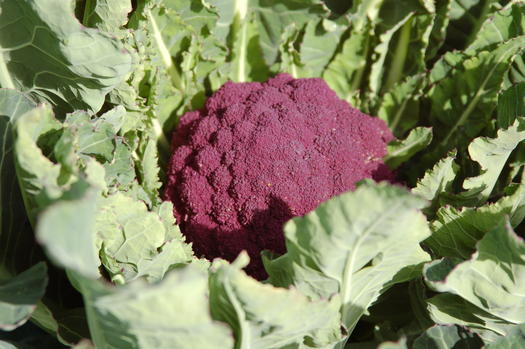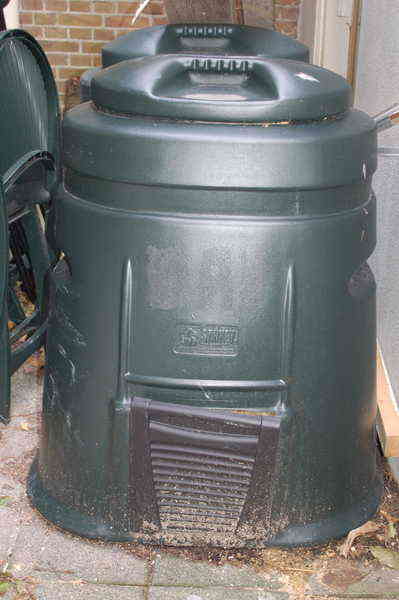If you already make your own compost and mulch your garden, this post isn’t for you. On the other hand, if you are just beginning with gardening or with organic gardening, here is an introduction to one of the best sources of fertilizer and related to it one of the best ways of controlling weeds.
If you have a small garden, or you are primarily composing kitchen waste, you may prefer to use a composting container. In another post I am going to go into more detail on what this is. In this post I am going to assume you have too much material to compost for a small container.
When deciding where to place your compost, you should keep a few things in mind. Compost has a lot of insects in it when it decomposes. They normally don’t go far from the compost, but this means it is best located away from frequently used areas. Compost has a distinctive odor, it’s not normally thought of as objectionable, but keep it in mind if you are sensitive to such things. Compost rarely attracts animals other than a few harmless insects, but if you have an established problem with things like cockroaches or rodents, they may make their home in the compost because it is warm.
I’m going to risk scaring you off by getting a little bit technical, but hang in there. Even if you don’t understand the underlying principles, composting and mulching are easy and it’s very difficult to go wrong. Composting is simply taking waste material from your garden and decomposing it into a form of dirt, that is very rich in nutrients and can be added to the ground in your garden to make it richer.
Composting is both a chemical and biological process. There are two very important elements in your garden, nitrogen (N) and carbon (C), and composting is a chemical reaction between these two elements. Composting is also a biological process, in that it involves a variety of micro-organisims and insects. Composting will work almost no matter what you do, but will go faster if you provide C and N in the correct proportions and provide good conditions for the biological processes to take place.
N is present in almost anything green (green leaves, grass clippings and so on) and also in animal manure, but it is also present in large quantities in the air we breath. C is present in almost anything else, especially in brown colored things (sticks, dried grass and so on).
When preparing a pile of material to be composted it is important to layer it. Layering is important to improve air circulation and water flow, but also because different materials will contain different amounts of C and N, and it is good to provide a good mix of these in all parts of the compost pile. Ideally you will alternate layers that are high in either N or C, providing slightly more C than N.
It’s much more important to make layers of some sort than it is to get the N and C right, so don’t worry about the N and C unless you are trying to make your compost decompose as quickly as possible. Since there is N in the air, if your compost pile needs to adjust the amount of N it will either release or absorb it from the air as necessary, but this will take a little longer than if the correct proportions are there initially.
Since composting is also a biological process, dependent on micro-organisms, it is a good idea to try to provide a souce of these if possible. They are present in the environment anyway, and will establish themselves eventually, but you can speed things up by adding them directly to the compost pile. A good souce of them is a shovel full or two of compost, if you have already made it in the past. Another good source is animal manure. It’s also possible to buy an inoculant from a garden center, but is perhaps not really worth the money, unless you are in a big hurry.
In general you can put anything in your compost pile that was once alive, so almost any plant or animal material. There are however some things to avoid for special reasons. It is very important to put clean things into your compost, and avoid things that could pollute the ground of your garden: commercial cut flowers will contain too many pesticides, paper may contain poisonous inks and bleaches, and so on. You should also never put diseased plants into your compost, because many diseases can survive the composting process and reinfect your garden. You should avoid things that could attract animals like meats or cooked foods. You should avoid large sticks or wood, unless they are chipped first, because they will take too long to decompose. It is a good idea to avoid putting seeds or potatoes into the compost, because these may not be killed and can turn into weeds. Animal bones will take too long to decompose. Small amounts of paper are not a particular problem, but large amounts of unshredded paper will ‘clog’ the compost and interfere with airflow. Egg shells are good for the compost, because they add calcium which is needed by many plants. It is rarely a problem to put living weeds in the compost, because the composting will quickly kill them.
The use of animal manure in composting or gardening is controversal. In theory, it will provide a good source of N and will compost well. In practice, like everything else you need to insure it is clean. If your manure comes from a commercial farm, it will likely contain traces of all of the food and drugs given to the animals it came from. In addition, if it came from animals that were sick, it will likely contain these diseases. Certified organic farmers who use manure, generally have to use certified organic manure. Manure can contain salmonella and E. coli, which can survive composting to contaminate your vegetables, and make you sick.
There are certainly gardeners who swear by manure in their gardens, but it is my experience that it is of no special benefit and is best avoided or used in small quantities. In any event, fresh manure is high in soluble N like nitrates and nitrites, which can burn the roots of small plants and cause environmental pollution. If you use manure in the garden, it is important that it be well aged and composted so the soluble N becomes fixed and can be used by plants as a fertilizer. Since manure is very high in N it is important to provide a good source of C when composting it, or it may not completly decompose.
Okay, once you have chosen what to put in your compost and layered it, now you have to let it sit. While it it decomposing you should keep it moist, but not water-logged. In addition, it should be able to breath, so don’t store it in an airtight container. Normally compost needs to sit through one complete summer before it is ready to use. Stirring it more often will make it decompose faster, but normally it should be stirred at least once, preferably at the beginning of the summer that it is to sit through.
Typically, a gardener will collect material to compost over the course of a gardening season and build the compost pile at the end of it. The pile would them be stirred the following spring. Stirring usually means to just move the pile from one place to another, but it’s also possible to stir it in place.
What can go wrong with composting? The answer is not very much, at worst it just won’t work until you fix whatever the problem is. If it is too dry, it will just stop decomposing until it is wet again. To avoid the compost pile from getting washed away, surround it with a fence or other border. If it is too wet or doesn’t get enough air, it will become a ‘stinking rotten mess’. Besides smelling bad, this isn’t very serious, just fix the problem and the smell will go away.
Even a ‘stinking rotten mess’ will decompose into compost eventually . It does this with an anaroebic (meaning without oxygen) process which takes longer, but still works. Another example of something that works with an anaerobic process is a septic tank.
If your composting is going well it will get very hot. Perhaps as high as 60C (140F). This is a good thing when it happens because it can kill seeds that may later turn into weeds, and many plant diseases can be killed as well. In addition, heat in turn makes the composting process go faster.
So where does mulch fit in with all of this? There are a few of the same principles behind mulch. Mulching is when you take a material like plastic sheeting, straw or wood chips and use it to cover a piece of ground that you want to protect from weeds. In part this works because it blocks sunlight from anything that might grow under it, but it also works on the same principle as composting. When mulch is rotting in your garden, it is composting, and it will destroy weeds by decomposing them. Weeds, like all growing plants, are high in N. One way that you can increase the effectiveness of mulch is to use something that is as high in C as possible. It should go without saying that it is important to keep mulch at least a few centimeters away from plants that are not weeds, or you may kill them as well.
Some mulches are also effective because they remove N from the ground. Wood chips are a good example of this. Wood chips are so high in C that when they decompose they need a source of N, and they get this from the ground. Since all plants need N to grow this makes wood chips a very effective mulch. Wood chips should be removed rather than be turned into the ground when you are ready to plant, because turning them under will make the ground N poor. Since removing them is a little difficult, they are better suited for areas around rather than in the garden.



